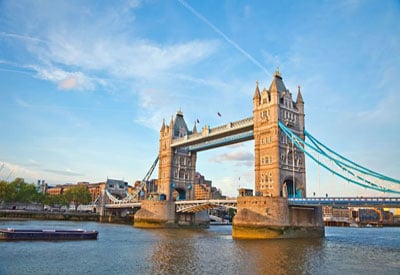The United States is located in the northern part of America, bordering both the North Atlantic Ocean and the North Pacific Ocean, between Canada and Mexico. With more than 300 million people, the United States is the third largest country by total area, and third largest by population. America has been often compared with a “melting pot,” because it welcomes people from many different countries, races, and religions. No other place in the world has such a diverse population The American society is one of the most fascinating multicultural mosaics.
:: Background of USA ::
Britain’s American colonies broke with the mother country in 1776 and were recognized as the new nation of the United States of America following the Treaty of Paris in 1783. During the 19th and 20th centuries, 37 new states were added to the original 13 as the nation expanded across the North American continent and acquired a number of overseas possessions. The two most traumatic experiences in the nation’s history were the Civil War (1861-65), in which a northern Union of states defeated a secessionist Confederacy of 11 southern slave states, and the Great Depression of the 1930s, an economic downturn during which about a quarter of the labor force lost its jobs. Buoyed by victories in World Wars I and II and the end of the Cold War in 1991, the US remains the world’s most powerful nation state. The economy is marked by steady growth, low unemployment and inflation, and rapid advances in technology.
In this Country Profile
:: Geography of USA ::
Location: North America, bordering both the North Atlantic Ocean and the North Pacific Ocean, between Canada and Mexico.
Geographic coordinates: 38 00 N, 97 00 W
Area:
total: 9,826,630 sq km
land: 9,161,923 sq km
water: 664,707 sq km
note: includes only the 50 states and District of Columbia.
Area – comparative: about half the size of Russia; about three-tenths the size of Africa; about half the size of South America (or slightly larger than Brazil); slightly larger than China; more than twice the size of the European Union.
Land boundaries:
total: 12,034 km
border countries: Canada 8,893 km (including 2,477 km with Alaska), Mexico 3,141 km
note: US Naval Base at Guantanamo Bay, Cuba is leased by the US and is part of Cuba; the base boundary is 28 km.
Maritime claims:
territorial sea: 12 nm
contiguous zone: 24 nm
exclusive economic zone: 200 nm
continental shelf: not specified
Climate: mostly temperate, but tropical in Hawaii and Florida, arctic in Alaska, semiarid in the great plains west of the Mississippi River, and arid in the Great Basin of the southwest; low winter temperatures in the northwest are ameliorated occasionally in January and February by warm chinook winds from the eastern slopes of the Rocky Mountains.
Terrain: vast central plain, mountains in west, hills and low mountains in east; rugged mountains and broad river valleys in Alaska; rugged, volcanic topography in Hawaii.
Elevation extremes:. lowest point: Death Valley -86m: highest: Mount McKinley 6198m
Natural resources: coal, copper, lead, molybdenum, phosphates, uranium, bauxite, gold, iron, mercury, nickel, potash, silver, tungsten, zinc, petroleum, natural gas, timber
note: the US has the world’s largest coal reserves with 491 billion short tons accounting for 27% of the world’s total.
Land use:
arable land: 18.01%
permanent crops: 0.21%
other: 81.78% (2005)
Natural hazards: tsunamis, volcanoes, and earthquake activity around Pacific Basin; hurricanes along the Atlantic and Gulf of Mexico coasts; tornadoes in the midwest and southeast; mud slides in California; forest fires in the west; flooding; permafrost in northern Alaska, a major impediment to development.
Environment – current issues: air pollution resulting in acid rain in both the US and Canada; the US is the largest single emitter of carbon dioxide from the burning of fossil fuels; water pollution from runoff of pesticides and fertilizers; limited natural fresh water resources in much of the western part of the country require careful management; desertification.
Environment – international agreements: party to: Air Pollution, Air Pollution-Nitrogen Oxides, Antarctic-Environmental Protocol, Antarctic-Marine Living Resources, Antarctic Seals, Antarctic Treaty, Climate Change, Desertification, Endangered Species, Environmental Modification, Marine Dumping, Marine Life Conservation, Ozone Layer Protection, Ship Pollution, Tropical Timber 83, Tropical Timber 94, Wetlands, Whaling. Signed, but not ratified: Air Pollution-Persistent Organic Pollutants, Air Pollution-Volatile Organic Compounds, Biodiversity, Climate Change-Kyoto Protocol, Hazardous Wastes.
:: People of USA ::
Population: 303,824,640 (July 2008 est.)
Age structure:
0-14 years: 20.1% (male 31,257,108/female 29,889,645)
15-64 years: 67.1% (male 101,825,901/female 102,161,823)
65 years and over: 12.7% (male 16,263,255/female 22,426,914) (2008 est.)
Median age:
total: 36.7 years
male: 35.4 years
female: 38.1 years (2008 est.)
Population growth rate: 0.883% (2008 est.)
Birth rate: 14.18 births/1,000 population (2008 est.)
Death rate: 8.27 deaths/1,000 population (2008 est.)
Net migration rate: 2.92 migrant(s)/1,000 population (2008 est.)
Sex ratio:
at birth: 1.05 male(s)/female
under 15 years: 1.05 male(s)/female
15-64 years: 1 male(s)/female
65 years and over: 0.72 male(s)/female
total population: 0.97 male(s)/female (2008 est.)
Infant mortality rate:
total: 6.3 deaths/1,000 live births
male: 6.95 deaths/1,000 live births
female: 5.62 deaths/1,000 live births (2008 est.)
Life expectancy at birth:
total population: 78.14 years
male: 75.29 years
female: 81.13 years (2008 est.)
Total fertility rate: 2.1 children born/woman (2008 est.)
HIV/AIDS – adult prévalence rate: 0.6% (2003 est.)
HIV/AIDS – people living with HIV/AIDS: 950,000 (2003 est.)
HIV/AIDS – deaths: 17,011 (2005 est.)
Nationality: noun: American(s) adjective: American
Ethnic groups: white 79.96%, black 12.85%, Asian 4.43%, Amerindian and Alaska native 0.97%, native Hawaiian and other Pacific islander 0.18%, two or more races 1.61% (July 2007 estimate) Note: a separate listing for Hispanic is not included because the US Census Bureau considers Hispanic to mean a person of Latin American descent (including persons of Cuban, Mexican, or Puerto Rican origin) living in the US who may be of any race or ethnic group (white, black, Asian, etc.); about 15.1% of the total US population is Hispanic.
Religions: Protestant 51.3%, Roman Catholic 23.9%, Mormon 1.7%, other Christian 1.6%, Jewish 1.7%, Buddhist 0.7%, Muslim 0.6%, other or unspecified 2.5%, unaffiliated 12.1%, none 4% (2007 est.)
Languages: English 82.1%, Spanish 10.7%, other Indo-European 3.8%, Asian and Pacific island 2.7%, other 0.7% (2000 census) Note: Hawaiian is an official language in the state of Hawaii.
Literacy:
definition: age 15 and over can read and write
total population: 99%
male: 99%
female: 99% (2003 est.)


Sorry, the comment form is closed at this time.